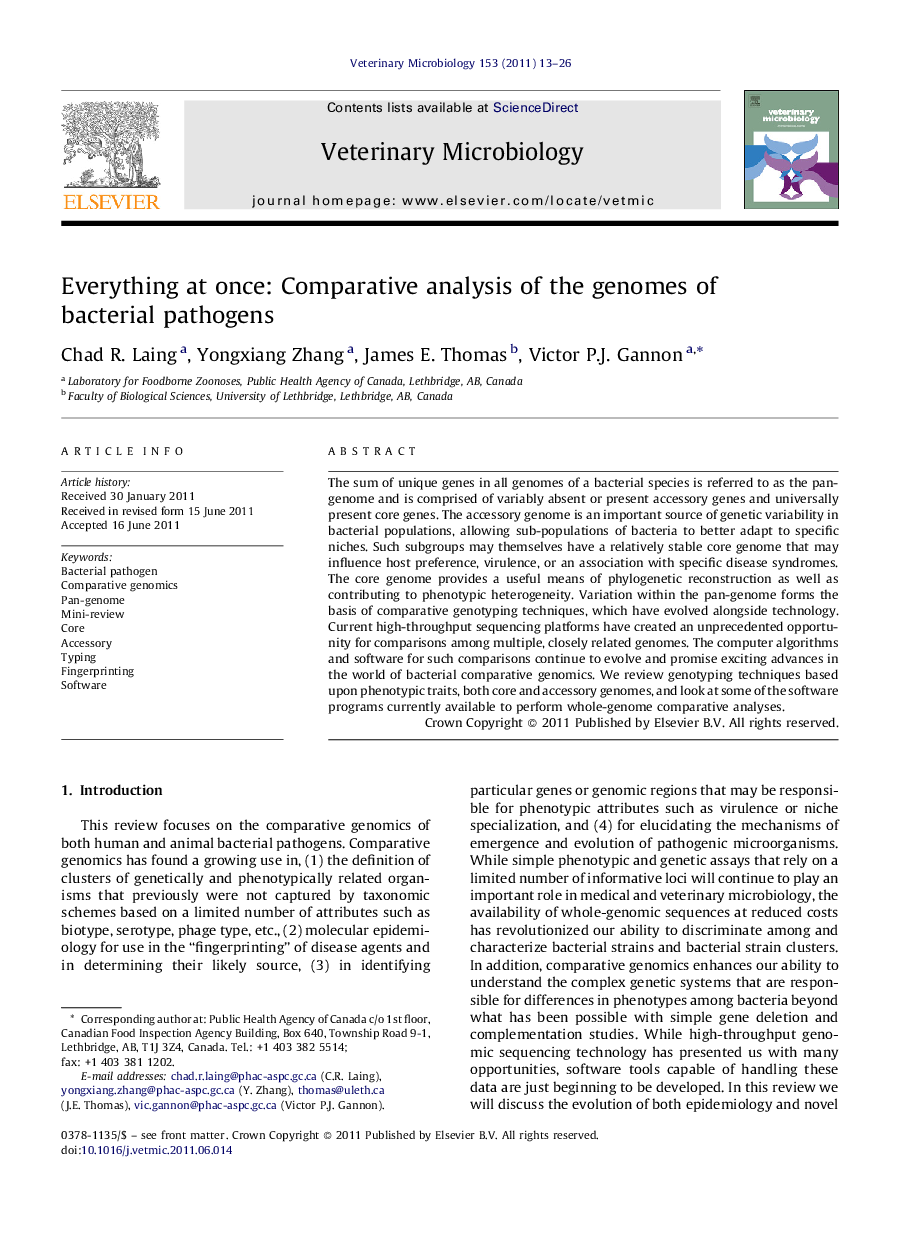| Article ID | Journal | Published Year | Pages | File Type |
|---|---|---|---|---|
| 2467482 | Veterinary Microbiology | 2011 | 14 Pages |
The sum of unique genes in all genomes of a bacterial species is referred to as the pan-genome and is comprised of variably absent or present accessory genes and universally present core genes. The accessory genome is an important source of genetic variability in bacterial populations, allowing sub-populations of bacteria to better adapt to specific niches. Such subgroups may themselves have a relatively stable core genome that may influence host preference, virulence, or an association with specific disease syndromes. The core genome provides a useful means of phylogenetic reconstruction as well as contributing to phenotypic heterogeneity. Variation within the pan-genome forms the basis of comparative genotyping techniques, which have evolved alongside technology. Current high-throughput sequencing platforms have created an unprecedented opportunity for comparisons among multiple, closely related genomes. The computer algorithms and software for such comparisons continue to evolve and promise exciting advances in the world of bacterial comparative genomics. We review genotyping techniques based upon phenotypic traits, both core and accessory genomes, and look at some of the software programs currently available to perform whole-genome comparative analyses.
